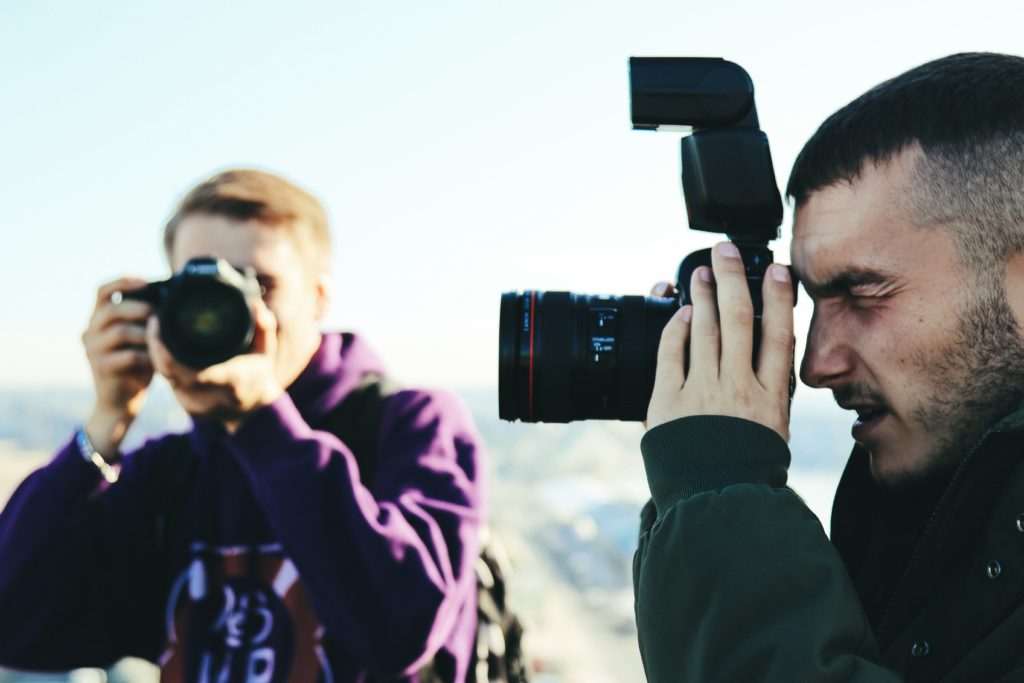There are many photographers who are very particular about sharpness. This is not a bad thing. In fact, it is a good practice to check for sharpness. But sometimes there is too much emphasis on sharpness that it seems like a photo is a lost cause when it isn't very sharp. This creates a tendency to treat blur like an enemy.

blurred movement by Martin Fisch, on Flickr
However, blur is simply a tool that can used as an element of composition the same way lines, tones, and colors are utilized in photographs. It shouldn't be treated like it’s the worst thing in the world to have. Using the right elements helps in creating the image result that you want and blur can be used to the advantage of the photographer.
Understanding the role of composition elements in a frame will allow shooters to use these elements effectively. With blur, we can identify five aspects that make it important and what it does to affect an image. These are also the five reasons why we should appreciate its function and love blur.
1. Blur Highlights Sharpness
If you want to emphasize the sharpness of a subject, blurring the background or certain parts of an image can help show that sense of sharpness. This also helps in drawing the viewer’s eye towards a specific location in the frame. Even when the subject isn't crisp enough, a much blurry background can give the impression that the subject is sharper. Take a look at the photo of circular patterns. Blur allows your eyes towards the sharper area and thus that area is given emphasis. It even provided a focal point area even with the absence of a unique element.

Mac-Frontseite by Björn Láczay, on Flickr
2. Blur Hides Flaws and Distractions
A distracting element in the background or foreground can prevent viewers from focusing on the real subject. Different techniques can be used. For example, the blur areas of wide depth of field can de-emphasize objects that are distracting. With the right amount of blur, flaws are given less attention when in these areas just like in the photo below. Blurring out the background not only removes the possibility of distracting elements in the background but also gives more visual weight to the sharper objects in the frame.
Another technique that can be used is panning. Flaws present around moving subjects can be hidden by motion blur created when using this method. Read more about how to do panning.

swamp bokeh by Dawn Huczek, on Flickr
3. Blur Softens up Features
Blur can be used to soften up an image. If the features of a specific object are too sharp, one can choose to use blur to make parts of the object look softer. Blurring out parts of the image whether during post processing or with the right use of depth of field matched with the right amount of light can create that softening effect. Blur has also been used to soften or smooth out skin or rough texture and even reduce image noise.
Blur can also be used to make certain effects. One such example is the dreamy look. Since photography is a kind of visual art, manipulating visual elements is the only way we can create an intuitive experience. Blur visually implies uncertainty. This allows an intuitive feeling like one is in a dream – being inside an uncertain or unreal location. Photos can have that dreamy look when parts of an image are blurred out and given the right lighting combination. Ever watched a movie where the director deliberately shows a person having a dream? You will notice some blur used around the frames to produce an illusion that the person is in the dream.

Dreamy Magnolia by Susanne Nilsson, on Flickr
4. Blur Demonstrates Distance
There are different ways to create a three-dimensional effect to an image. Tones, lines, and blur are some examples. When there is a variation of blur in an image caused by wide depth of field, it shows the distance between different objects in the frame. This helps in creating a three-dimensional illusion to a two-dimensional art form. Take a look at the image of the flowers, since there is a variation of sharpness and blur, the viewer’s eye assumes the distances of each flower based on the amount of blur on each flower. The more blur, the farther the distance.

126.365_pink_flower_field by Todd Morris, on Flickr
5. Blur Implies Motion and Speed
One of the most effective ways to show movement is the use of blur. Slow shutter techniques that create motion blur can demonstrate an illusion of movement, acceleration, and momentum in an art-form normally limited to show a frozen moment. The image showing two moving subjects inside a tunnel is a good example. Just by looking at the photo, you immediately know that both subjects are in motion, one walking and the other riding a bike. The amount of motion blur of the biker also implies that he is going faster than the one walking. It’s not just because bikes really run faster but the relative blur created by the movement shows this comparison.

Under Beijing by Jonathan Kos-Read, on Flickr
Further Resources on Blur
- 3 Situations Where Blurred Photos Just Work
- Breaking Rules: Loving the Blur
- Soft Dreamy Effect





